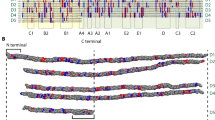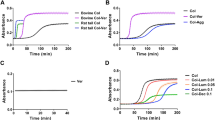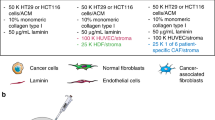Abstract
The synthesis and localization of collagen have been studied on material from a total of 16 primary Ewing's tumours. The predominant collagen extracted from the tissues and synthesized in short-term cultures was type I. The proportion of type III collagen was relatively small and variable (0-8%) in the direct tumour extracts, but a higher proportion (29-38% of the total collagens) was synthesized in culture. Immunofluorescence studies showed that positive staining for all types of collagen tested (types I, III, IV and V) was restricted to stroma, there was no evidence of collagen either within the tumour cells or in their pericellular matrix, a finding endorsed by negative staining for reticulin in the same areas. The absence of any evidence for type IV or V collagen synthesis by Ewing's cells argues against an endothelial origin for the tumour, and indicates that collagen analysis is unlikely to be of value in the diagnosis of this particular sarcoma.
This is a preview of subscription content, access via your institution
Access options
Subscribe to this journal
Receive 24 print issues and online access
$259.00 per year
only $10.79 per issue
Buy this article
- Purchase on Springer Link
- Instant access to full article PDF
Prices may be subject to local taxes which are calculated during checkout
Similar content being viewed by others
Rights and permissions
About this article
Cite this article
Harvey, W., Squier, M., Duance, V. et al. A biochemical and immunohistological study of collagen synthesis in Ewing's tumour. Br J Cancer 46, 848–855 (1982). https://doi.org/10.1038/bjc.1982.294
Issue Date:
DOI: https://doi.org/10.1038/bjc.1982.294
This article is cited by
-
In Ewing's sarcoma CCN3(NOV) inhibits proliferation while promoting migration and invasion of the same cell type
Oncogene (2005)
-
Small round cell tumours of bone
Virchows Archiv A Pathological Anatomy and Histopathology (1991)



